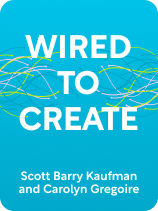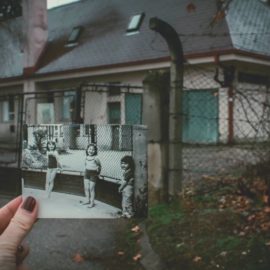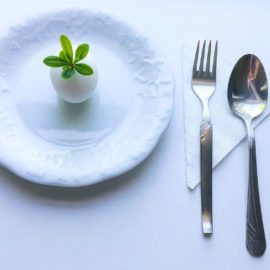

This article is an excerpt from the Shortform book guide to "Wired to Create" by Scott Barry Kaufman and Carolyn Gregoire. Shortform has the world's best summaries and analyses of books you should be reading.
Like this article? Sign up for a free trial here.
What is creative intuition? What’s the source behind intuition?
In the book Wired to Create, Scott Barry Kaufman and Carolyn Gregoire say that intuition is an important characteristic of creatives. They believe that intuition is a product of the automatic processing system of your mind.
Continue reading to learn where creative intuition comes from and how artists use it.
Curating Creative Intuition
According to the authors of Wired to Create, one characteristic creatives share is strong creative intuition. Intuition is an inner feeling you have that urges you to do something or change your frame of mind. For example, intuition can be an intense emotion, the urge to explore something, a sense of knowing something you can’t prove, and so on. The authors explain that intuition, or gut instinct, is often a catalyst for creative insights. Many creative people believe that their intuition, and consequently their creative insights, come from some higher power.
(Shortform note: In Big Magic, Elizabeth Gilbert argues that intuition is a method that a higher creative power uses to communicate ideas with us—she refers to this higher creative power as “Big Magic.” Further, Gilbert explains that the ideas we receive from Big Magic through our intuition are independent entities with their own will. Consequently, when one “visits” you, it’s your job to honor it by exploring it rather than writing it off as unrealistic, for example. Gilbert explains that this way of thinking will help you follow your intuition and boost your creativity.)
While the authors acknowledge the possibility of intuition coming from a higher power, they also explore the more scientific perspective that intuition is a product of the automatic processing system of our mind. This perspective also explains why creativity is linked to intuition.
Whereas the deliberate processing system of our mind is more controlled and analytical when generating ideas, the authors explain that the automatic processing system is spontaneous and often relies on information that we’ve implicitly and subconsciously learned through experiences. When using the automatic system of idea generation, our mind makes unique connections between past experiences and current stimuli that come to us in a sudden burst of “inspiration.” The more unique and unconventional these connections are, the more creative our ideas are. This is why following your intuition—or using your automatic processing system to generate ideas—often produces creative insights.
For example, imagine you’re an avid fiction reader—you’ve read a variety of genres with different themes and plots. Your subconscious mind has absorbed all the different story lines, plot developments, and literary strategies you’ve read. When writing your own book, you may experience intuition telling you to make certain unique decisions pertaining to your plot or characters. This internal guidance may seem mysterious, but it’s likely a result of your automatic processing system drawing connections between all the different books you’ve read and combining different writing strategies to help you come up with something new.
| Use a Second Brain to Boost Your Automatic Processing System In Building a Second Brain, Tiago Forte reiterates that creative insights are spawned by our brains’ ability to make unique connections between information we’ve acquired throughout our lives—the process of automatic thinking that the authors say fuels intuition. However, in the modern age, our brains struggle to reach peak creative potential—despite being constantly inundated with valuable information and potential creative tinder, our brains haven’t developed enough to retain all this information. This means that we’re likely to forget a piece of information that would otherwise have sparked a creative insight at some point in the future. Forte explains that we can overcome this limitation of our brain and maximize our ability to make unique connections by using what he calls a “Second Brain”—a highly organized digital storage system where we can file every piece of important information we encounter so nothing slips between the cracks. Forte explains that part of using a Second Brain is regularly revisiting the ideas and information you’ve recorded. This will equip your automatic processing system to make unique connections between current experiences and past ideas and information you would otherwise have forgotten. |

———End of Preview———
Like what you just read? Read the rest of the world's best book summary and analysis of Scott Barry Kaufman and Carolyn Gregoire's "Wired to Create" at Shortform.
Here's what you'll find in our full Wired to Create summary:
- What creativity truly means—and why it’s hard to define
- The 10 characteristics of creative people
- How to maximize your creative potential






